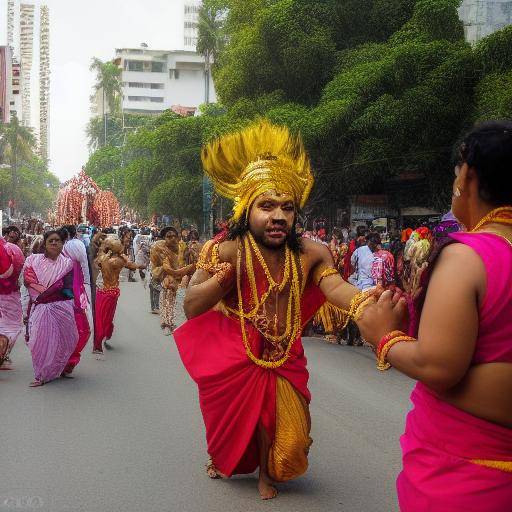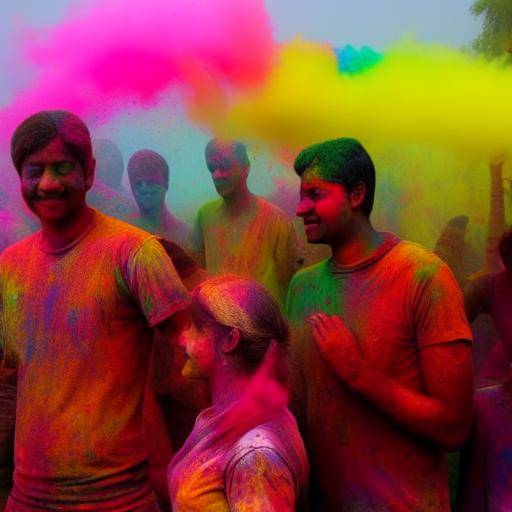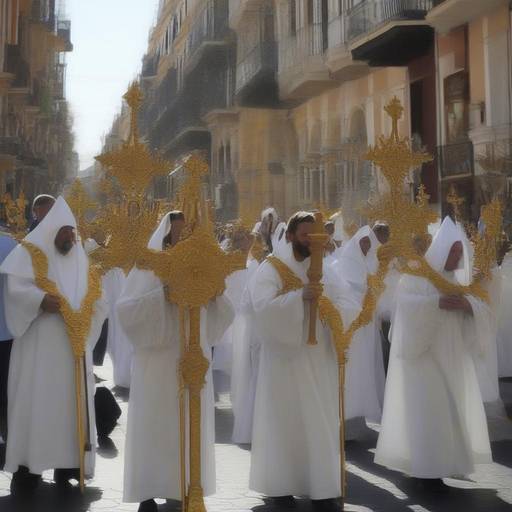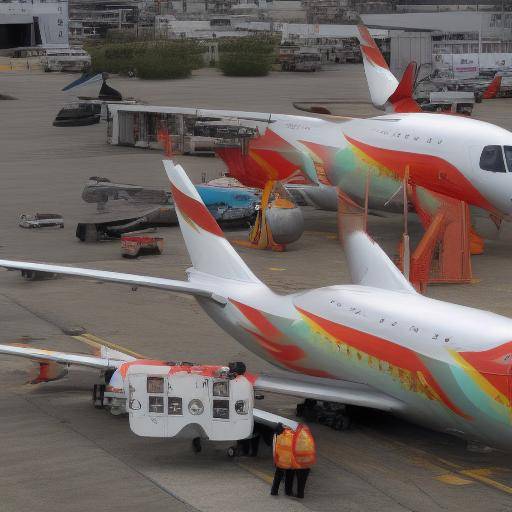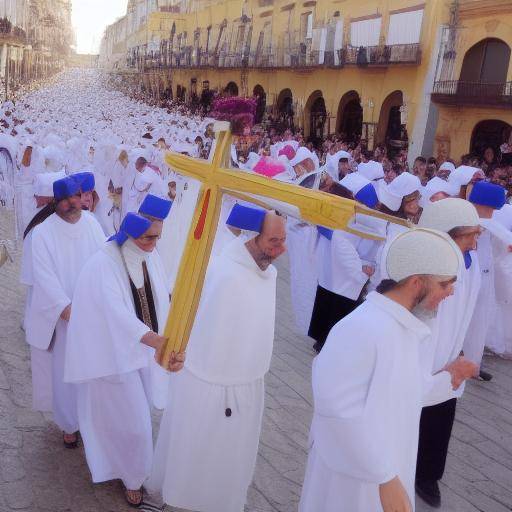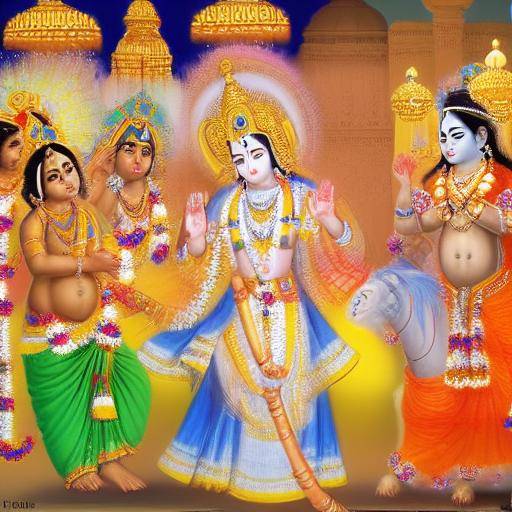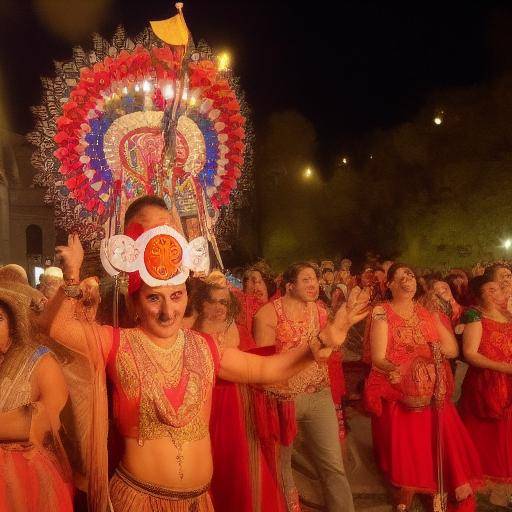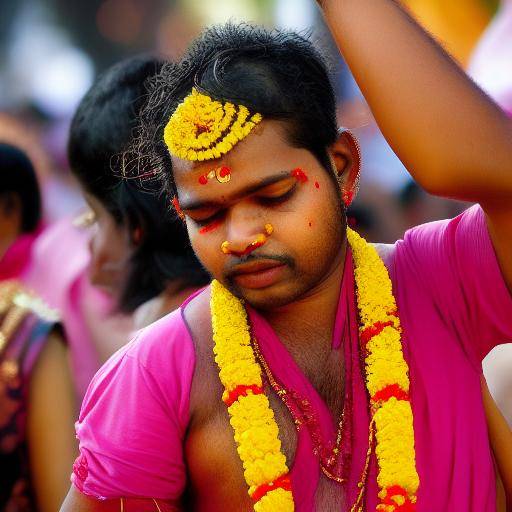
Introduction
In Malaysia, one of the most shocking and spiritual festivities of Hinduism is celebrated: Thaipusam. This celebration is known for the shocking processions in which devotees perform impressive acts of devotion, including body piercings in honor of the god Murugan. Throughout this article, we will explore in detail the cultural, spiritual and physical meanings of Thaipusam, as well as the relevance of piercing practices in the Hindu religious context and the moving processions that characterize this festival. Immerse yourself in the rich amalgam of faith and tradition that distinguishes Thaipusam, while exploring in depth the fundamental aspects of this celebration.
Hinduism in Thaipusam: Meaning and Devotion
Hinduism is one of the oldest religions in the world, being the basis of numerous cultural and spiritual traditions. Thaipusam, a Hindu festival celebrated in honor of the god Murugan, is a testimony to the profound devotion of the followers of this religion. During this period, devotees surrender to intense rituals and personal sacrifices as an expression of their faith. The symbolic and spiritual elements of Hinduism in Thaipusam reflect a profound connection between the divine and the earthly, incarnating the devotion and determination of the participants.
Thaipusam Piercings: An Act of Faith and Sacrifice
Corporal piercings are a distinctive feature of Thaipusam, symbolizing personal sacrifice and spiritual purification. The devotees carry out these acts of bodily penetration as an extreme sign of their devotion and determination to honor the god Murugan. This aspect of the festival not only highlights the importance of faith in the lives of Hindus, but also represents a powerful expression of cultural and spiritual identity.
Processions in Thaipusam: The Visual Devotion Demonstration
Processions during Thaipusam are true testimonies of the devotion and determination of the participants. The streets are filled with vibrant energy, while devotees perform long walks carrying structures adorned with offerings and performing sacred rituals. The atmosphere is flooded with devotional chants and the smell of incense, creating an atmosphere of spiritual fervor. These processions are not only a public expression of faith, but they are also community events that unite followers in a shared sense of religious and cultural identity.
History and Origin of Thaipusam
Thaipusam has its roots in ancient Hindu traditions and its evolution over the centuries has endowed this festival with a profound spiritual and cultural significance. The historical origin of Thaipusam dates back to ancient legends and myths that narrate heroic deeds of the gods and are linked to transcendental cosmic events. Over time, Thaipusam has evolved in its practice and celebration, adapting to the different Hindu communities in Malaysia and elsewhere in the world.
Advantages and Challenges of Thaipusam Piercings
Thaipusam piercings are a physical manifestation of the faith and devotion of the participants, but they also carry physical and emotional challenges. These acts can be seen as a way of facing pain in search of spiritual purification, but they also raise ethical and security issues. Exploring the benefits and challenges of piercings in the Thaipusam context allows us to understand the complexity of these practices from different perspectives.
Current Trends in Thaipusam Processions
Thaipusam processions continue to evolve year after year, reflecting changing social and cultural dynamics. The influence of technology, tourism and globalization has impacted on the way these processions are carried out, presenting both opportunities and challenges for the preservation of ancestral traditions in a modern world. This raises questions about authenticity and cultural adaptation that deserve to be explored in depth.
Comparison between Thaipusam, Piercings and Processions
By comparing the religious practices of Thaipusam, ceremonial piercings and processions, significant connections are revealed between the spiritual, cultural and physical elements of this holiday. Reviewing these practices from a comparative perspective allows us to appreciate their complexity and diversity, as well as to understand their relevance in the broader context of Hinduism and religious traditions in the world.
Tips and Recommendations for Participants in Thaipusam
For those who wish to participate in Thaipusam or witness this celebration, it is crucial to understand the cultural and religious practices involved. From physical and emotional preparations for participants, to behavioral guidelines for observers, providing practical guidance and recommendations can enrich the experience of all those who wish to participate in a respectful manner.
Reflections of Experts and Leaders in Religion and Tradition
Gathering the perspectives of religious leaders, cultural and academic experts can enrich our understanding of Thaipusam, ceremonial piercings and processions. Exploring their reflections and opinions provides a depth of knowledge and an informed view of the theological, anthropological and sociological aspects of these practices, thus enriching our appreciation and understanding of the festival.
Case Studies and Real Applications
Through case studies, real Thaipusam applications and manifestations, ceremonial piercings and processions can be explored in different contexts and communities. These narratives offer a unique vision of the influence and personal meaning of these practices, demonstrating their multifaceted impact on the lives of participants and communities.
Future Trends and Predictions
In considering the changing influences and the continuing evolution of Thaipusam-related practices, ceremonial piercings and processions, it is essential to anticipate future trends and possible changes. This analysis allows us to glimpse the future of these sacred traditions, as well as their possible adaptations and challenges in a constantly changing world.
Conclusion
Thaipusam is a deeply rooted holiday in Hindu tradition and faith, characterized by ceremonial piercings and impressive processions. This celebration transcends the limits of the physical, emotional and spiritual, representing a powerful expression of devotion and sacrifice. As we explore in detail the complexities and meanings behind Thaipusam, ceremonial piercings and processions, we immerse ourselves in the rich cultural and religious heritage that defines this festival.
Frequently asked questions
**1. What is the spiritual meaning of Thaipusam for the followers of Hinduism?**For the followers of Hinduism, Thaipusam represents devotion and determination in honor of the god Murugan. Participants seek spiritual purification and blessings through personal sacrifices and acts of faith.
**2. Why do devotees perform piercings in Thaipusam?**Thaipusam piercings symbolize personal sacrifice in honor of Murugan. Participants seek to purify their bodies and demonstrate their devotion through this extreme act.
**3. How are the processions carried out during Thaipusam?**The processions during Thaipusam involve long walks of devotees carrying structures adorned with offerings and performing sacred rituals while manifesting their devotion through singing and music.
**4. What are the physical and emotional challenges associated with Thaipusam piercings?**Physical challenges include pain and possible discomfort during and after the drilling process, while emotional challenges may involve confrontation with fear and overcoming personal limits in pursuit of devotion.
**5. How has Thaipusam evolved over the years in response to sociocultural changes?**Thaipusam has evolved to incorporate technological and tourist influences, adapting to the dynamics of the modern world. There have been changes in the ways in which processions and rituals are carried out, which raises questions about the preservation of cultural authenticity.
**6. What are the future implications of Thaipusam practices, ceremonial piercings and processions in the religious and cultural context?**The evolution of Thaipusam and its practices raises questions about the preservation of cultural authenticity and the challenges of maintaining relevance in a changing world. Future implications also include adaptation to global trends and preservation of ancestral traditions.
In short, Thaipusam is a celebration that transcends physical and emotional borders, exemplifying the devotion and sacrifice of the participants. The ceremonial piercings and processions are intertwined in a rich religious and cultural tapestry, which deserves to be explored and understood in all its complexity. This festival offers a window to the world of Hinduism, its devotional practices and its deep connection to identity and tradition.

